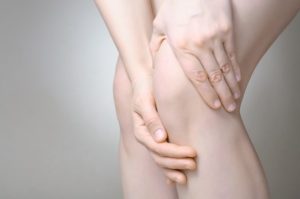Adult Stem Cell Therapy & Platelet Rich Plasma
Treating OA with BMSC
 Bennett Orthopedics and Sportsmedicine has successfully treated patients with biologics such as PRP and bone marrow stem cells for more than a decade. Patients are eager to learn about alternatives to “going under the knife” to treat problems like osteoarthritis of the knee and torn menisci.
Bennett Orthopedics and Sportsmedicine has successfully treated patients with biologics such as PRP and bone marrow stem cells for more than a decade. Patients are eager to learn about alternatives to “going under the knife” to treat problems like osteoarthritis of the knee and torn menisci.
Joint replacement surgery
As an orthopedic surgeon who has done joint replacements for over 20 years, Dr. Bennett recognizes that successful total knee replacement can alleviate various stages of arthritis in the knees and shoulders, as well as the hips, often providing significant benefits to the patient. However, any surgery carries a risk of complications, and studies have found that a significant percentage of patients who have joint replacements— even without complications— report that they are not happy with the final outcome.
New non-surgical treatments for arthritis
Because of the high number of patients who are unhappy with artificial joints, other options should be tried prior to total joint replacement surgery. These may include oral medications and types of injections like Cortizone or Visco supplementation lubricating injections. Newer biologic injections such as platelet rich plasma (“PRP”) and bone marrow concentrate stem cells offer patients additional options to try before deciding to undergo a joint replacement surgery.
How Stem Cells Treat Arthritis
Stem cells extracted from bone marrow stem cells have a powerful effect when placed into an arthritic environment. Cytokines and growth factors in the cells can reverse the chemical processes associated with an arthritic environment. While the bone marrow stem cells or bone marrow concentrate do not regrow cartilage, they do change the chemical environment for the enzymes that are controlling the pain in the knee. Stem cells injected into the joint stimulate the synovial cells to secrete lubricating fluid, and prompt the cartilage cells to try to create an extracellular matrix to heal itself. Injected bone marrow stem cells also have a positive effect on the capsule, ligaments, and tendon.
How to know if you are a good candidate for stem cell treatment
How do you know if you’re a good candidate for bone marrow stem cell treatment? In general, those with the most severe arthritic conditions are less likely than others to benefit, however, being “bone on bone” is not a contraindication for the procedure.
In the case of “bone on bone” arthritis, often there are angular deformities and problems with the patella or knee cap tracking properly. So, in addition to the injection, a combination approach utilizing bracing and physical therapy may be indicated. Dr. Bennett also uses bone marrow derived stem cells in conjunction with arthroscopic surgery procedures for well-defined cartilage damage and also for moderate localized areas of arthritis in attempts to have these areas grow cartilage.
What to expect
Biologics offer a great treatment choice for those looking for a quick recovery period. After stem cell treatment of a weight bearing joint, Dr. Bennett usually recommends using a walking aid like crutches or a walker for three to six weeks. All patients will follow up with the doctor after two weeks to assess how their recovery process is going.






